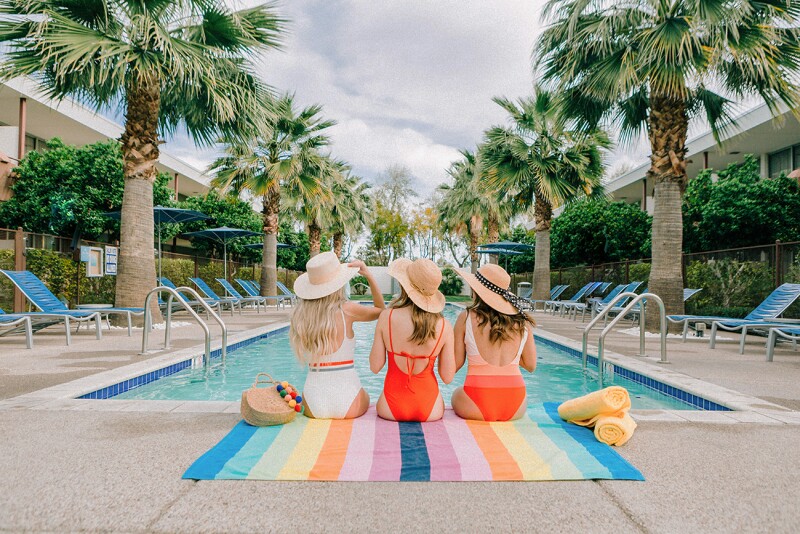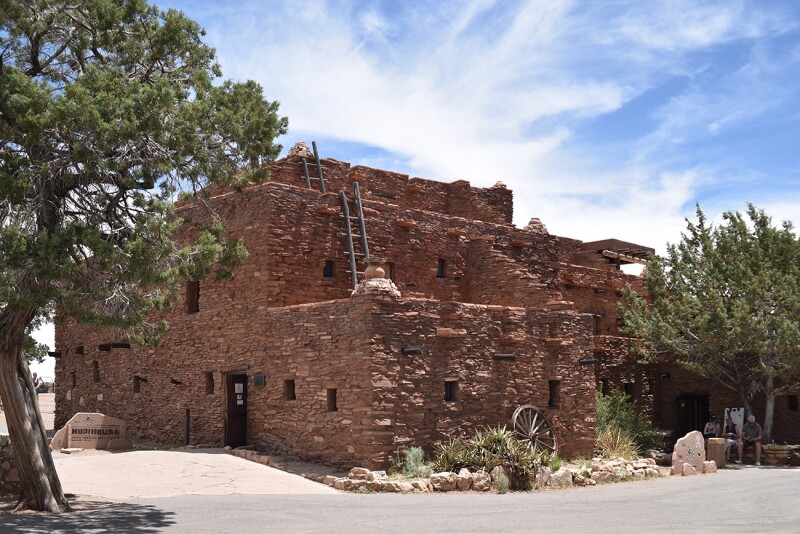Arizona’s wild, otherworldly landscape has captivated humans since American Indians settled here some 12,000 years ago. With six ecological biomes, 22 indigenous tribes, and myriad communities that celebrate agricultural and architectural legacies, the sixth largest state in the nation is also one of its most diverse.
Hollywood westerns may give the impression of a cactus-studded state locked in time, but there’s plenty more for visitors to Arizona than simply sunsets and sage brush. Whether it’s your first time visiting or you keep coming back for more, these 10 Arizona experiences should be on your radar.
Explore the Grand Canyon
Arizona’s most famous attraction is a geological wonder that meanders for 277 miles, stretching a mile deep and up to 18 miles across along the way. Its namesake national park—which turned 100 in 2019—sees more than 6 million visitors a year.
There are many ways to explore the canyon: For a quick day trip from Phoenix, snag a one-day shuttle (it’s a 3.5-hour drive to the South Rim) or an airplane tour. If you can carve out more time, you can see the canyon by taking hikes, muleback treks, raft trips on the Colorado River, and even strolls above it all on the Skywalk, a glass bridge 4,000 feet over the canyon floor. Get a deeper sense of the canyon’s archaeological, biological, and ecological stories by joining one of the Grand Canyon Conservancy’s hands-on field classes.
Rejuvenate in Sedona

Healing energy is believed to swirl among the red rocks of Sedona.
Photo by Tom Tietz/Shutterstock
Sedona was a hot spot for holistic health-seekers long before wellness travel was a thing. Tucked in a landscape of red sandstone cliffs and spires, it inspires artists and mystics alike. In the town itself you’ll find spas, galleries, yoga studios, therapeutic massage parlors, and spiritual centers, all offering something for a world-weary mind or body. For something unique, head to the Vortex Treehouse at L’Auberge de Sedona and indulge in one of the signature rituals. If you prefer to let nature itself do the healing, head for the rocks: Enlightening—or, at least, stimulating—adventure can be found hiking, biking, or climbing in the area’s four wilderness areas and two state parks. For those seeking deeper insights and energy fields, local sites such as Airport Mesa, Cathedral Rock, Bell Rock, and Boynton Canyon are considered especially powerful.
Play on Lake Havasu

Rent a boat and hit the water at Lake Havasu.
Photo by Theron Stripling III/Shutterstock
Lake Havasu is probably best known for the London Bridge, which was dismantled in 1968, shipped from London via the Panama Canal, and rebuilt here. While you should venture into the surrounding Lake Havasu City to explore the local food and craft beer scene, all that water nearby is too tempting to stay on dry land for long. Rent a motor boat and water skis, relax on a houseboat, or fish for striper and bass.
Lasso a stay at Rancho de la Osa

The historic Rancho de la Osa offers horseback rides through the Sonoran Desert.
Courtesy of Rancho de la Osa
Ninety minutes southwest of Tucson on the U.S.-Mexico border sits a 590-acre guest ranch with some serious history. Built in the 1700s, the remarkable property has been visited by guests like Joan Crawford and President Lyndon B. Johnson. Cannonballs were discovered in the stucco walls of one of the guest villas—the result of Pancho Villa’s unsuccessful attempt to nab the ranch for himself. Since its reopening in 2017, Rancho de la Osa offers guests the chance to ride horses through the Sonoran Desert and along the border fence, and it has added hikes through the nearby Buenos Aires Wildlife Refuge as well as fat tire bike rides among the mesquite trees and spiny ocotillo plants.
Celebrate food, drink, and history in Tucson

Tucson’s Barrio Bread uses centuries-old techniques to make thoroughly modern bread.
Photo by Bill Steen
In 2016, Tucson was named the United States’ first UNESCO City of Gastronomy for its agricultural history—the longest in the nation—as well as its efforts to create a sustainable society and modern cuisine. Tucson’s culinary scene looks to the desert and the past for its inspiration. Some favorite local makers include Barrio Bread, a bakery that uses centuries-old techniques and locally grown heritage grains like White Sonoran and Blue Beard durum wheats, and Town Under Black, a micro-distillery that employs pre-Prohibition methods to craft spirits from heirloom grains, desert plants, and wild yeasts.
Step back in time in Bisbee

Bisbee is worth a visit for its interesting history and thriving arts scene.
Photo by Shutterstock
The town of Bisbee, set among the folds of the Mule Mountains, thrived for almost a century as a mining community. After the mines closed in the mid-1970s, the nearly abandoned town began to attract new residents, free spirits who were drawn to its inspiring scenery and quirky history. Today, tourists can wander steep neighborhoods linked by stairs to ogle yard art, visit the historic Queen Mine, and explore the city’s haunts on an Old Bisbee Ghost Tour.
Relax at one of Scottsdale’s stylish resorts

Indulge in a luxurious stay at the recently renovated Hotel Valley Ho.
Courtesy of Hotel Valley Ho
Scottsdale, at the edge of the Sonoran Desert on the outskirts of Phoenix, has long been a destination for luxurious resort stays and golf-focused vacations. These days, visitors also come for the art and architecture, past and present. To experience this thriving community for yourself, tour Frank Lloyd Wright’s Taliesin West, stay at midcentury modern Hotel Valley Ho or design-centric Andaz Scottsdale, and get a feel for the contemporary art scene via Cattle Track Arts or Scottsdale’s Public Art Walking Tour.
Go winetasting in Willcox and Sonoita

The wine-growing region of Sonoita is known for its Mediterranean and Spanish varietals.
Photo by Jean Gargasz/Alamy
For wine drinkers focused on Napa Valley, Arizona’s burgeoning industry may come as a surprise. But people have been growing grapes and making wine in the Grand Canyon State for centuries. From Tucson, oenophiles can head south to Sonoita or east to Willcox, both agricultural strongholds that have embraced the power of the fermented grape. Arizona’s high elevations, desert climate, and sandy soil lend themselves better to Mediterranean and Spanish varietals than the vines that thrive in California, and winemakers have used that to their advantage. Instead of looking for cabernet sauvignon or chardonnay, try a mourvedre, viognier, or montepulciano.
Witness vibrant Hopi culture

Learn all about the Hopi Tribe past and present at Old Oraibi Village.
Photo by Paul R. Jones/Shutterstock
Perched on Third Mesa on the Hopi Reservation in northeastern Arizona, Old Oraibi Village has been continuously inhabited since its founding approximately 1,000 years ago, making it one of the oldest communities in the United States. With a mix of centuries-old and contemporary architecture, and residents who embrace traditional and modern ways, the isolated village serves as an illustration of a living Hopi culture. The most respectful and interesting way to visit Old Oraibi and the surrounding area can be arranged through an authorized local operator. With Experience Hopi, guests visit Hopi villages, engage with elders, tour box canyons adorned with petroglyphs, and trace the Hopi Arts Trail.
Get off the beaten track in Ajo

This mural by artist Kat Anderson is part of the mesmerizing Artists’ Alley in Ajo.
Photo by Ajo Street Art Happening
Thirty-seven miles north of the Mexico border, the town of Ajo is an artistic oasis surrounded by 12 million acres of wilderness (including Organ Pipe Cactus National Monument). A magnet for quirky transplants from all over, the former mining town has turned a creative new leaf in recent years. The converted Curley School provides affordable studio space and housing for artists, while the Sonoran Desert Inn and Conference Center offers lodging for tourists and hosts a range of community development projects, from public gardens to an artists’ residency. Artists’ Alley, a civic mural project, began, as you can guess by its name, confined to an alley, but over the years has expanded to a walkable district. And the town’s public art does much to celebrate the beauty of the surrounding desert and tackle big themes, including migration and environmental conservation.
>>Next: Plan Your Trip With AFAR’s Travel Guide to Arizona











